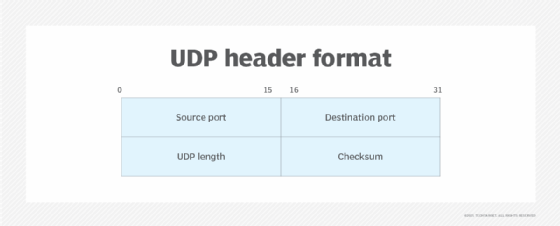Products Category
- FM Transmitter
- 0-50w 50w-1000w 2kw-10kw 10kw+
- TV Transmitter
- 0-50w 50-1kw 2kw-10kw
- FM Antenna
- TV Antenna
- Antenna Accessory
- Cable Connector Power Splitter Dummy Load
- RF Transistor
- Power Supply
- Audio Equipments
- DTV Front End Equipment
- Link System
- STL system Microwave Link system
- FM Radio
- Power Meter
- Other Products
- Special for Coronavirus
Products Tags
Fmuser Sites
- es.fmuser.net
- it.fmuser.net
- fr.fmuser.net
- de.fmuser.net
- af.fmuser.net ->Afrikaans
- sq.fmuser.net ->Albanian
- ar.fmuser.net ->Arabic
- hy.fmuser.net ->Armenian
- az.fmuser.net ->Azerbaijani
- eu.fmuser.net ->Basque
- be.fmuser.net ->Belarusian
- bg.fmuser.net ->Bulgarian
- ca.fmuser.net ->Catalan
- zh-CN.fmuser.net ->Chinese (Simplified)
- zh-TW.fmuser.net ->Chinese (Traditional)
- hr.fmuser.net ->Croatian
- cs.fmuser.net ->Czech
- da.fmuser.net ->Danish
- nl.fmuser.net ->Dutch
- et.fmuser.net ->Estonian
- tl.fmuser.net ->Filipino
- fi.fmuser.net ->Finnish
- fr.fmuser.net ->French
- gl.fmuser.net ->Galician
- ka.fmuser.net ->Georgian
- de.fmuser.net ->German
- el.fmuser.net ->Greek
- ht.fmuser.net ->Haitian Creole
- iw.fmuser.net ->Hebrew
- hi.fmuser.net ->Hindi
- hu.fmuser.net ->Hungarian
- is.fmuser.net ->Icelandic
- id.fmuser.net ->Indonesian
- ga.fmuser.net ->Irish
- it.fmuser.net ->Italian
- ja.fmuser.net ->Japanese
- ko.fmuser.net ->Korean
- lv.fmuser.net ->Latvian
- lt.fmuser.net ->Lithuanian
- mk.fmuser.net ->Macedonian
- ms.fmuser.net ->Malay
- mt.fmuser.net ->Maltese
- no.fmuser.net ->Norwegian
- fa.fmuser.net ->Persian
- pl.fmuser.net ->Polish
- pt.fmuser.net ->Portuguese
- ro.fmuser.net ->Romanian
- ru.fmuser.net ->Russian
- sr.fmuser.net ->Serbian
- sk.fmuser.net ->Slovak
- sl.fmuser.net ->Slovenian
- es.fmuser.net ->Spanish
- sw.fmuser.net ->Swahili
- sv.fmuser.net ->Swedish
- th.fmuser.net ->Thai
- tr.fmuser.net ->Turkish
- uk.fmuser.net ->Ukrainian
- ur.fmuser.net ->Urdu
- vi.fmuser.net ->Vietnamese
- cy.fmuser.net ->Welsh
- yi.fmuser.net ->Yiddish
What Is UPC?
Date:2020/9/21 14:12:12 Hits:

Both UDP and TCP run on top of IP and are sometimes referred to as UDP/IP or TCP/IP; however, there are important differences between the two. For example, UDP enables process-to-process communication, while TCP supports host-to-host communication. Furthermore, TCP sends individual packets and is considered a reliable transport medium. On the other hand, UDP sends messages, called datagrams, and is considered a best-effort mode of communications -- meaning the service does not provide any guarantees that the data will be delivered or offer special features to retransmit lost or corrupted messages.
In contrast, UDP is considered a connectionless protocol because it doesn't require a virtual circuit to be established before any data transfer occurs. The communication protocol just sends the packets, which means that it has much lower bandwidth overhead and latency. With UDP, packets may take different paths between sender and receiver, and as a result, some packets may be lost or received out of order.
User Datagram Protocol features
User Datagram Protocol has attributes that make it beneficial for use with applications that can tolerate lost data. For example:
● It allows packets to be dropped and received in a different order than they were transmitted, making it suitable for real-time applications where latency might be a concern.
● It can be used for transaction-based protocols, such as DNS or Network Time Protocol (NTP).
● It can be used where a large number of clients are connected and where real-time error correction isn't necessary, such as gaming, voice or video conferencing, and streaming media.

UDP uses headers when packaging message data to transfer over network connections. UDP headers contain a set of parameters -- called fields -- defined by the technical specifications of the protocol.
The User Datagram Protocol header has four fields, each of which is 2 bytes.
They are the following:
● Source port number, which is the number of the sender;● Destination port number, the port the datagram is addressed to;
● Length, the length in bytes of the UDP header and any encapsulated data; and
● Checksum, which is used in error checking -- its use is required in IPv6 and optional in IPv4.
Leave a message
Message List
Comments Loading...





